When you think about arcade games, certain titles likely come to mind—games that defined eras and captivated players worldwide. You might recall the thrill of maneuvering Pac-Man through a maze or battling friends in Street Fighter II. These games didn’t just entertain; they shaped gaming culture and left a lasting legacy. But what exactly makes these arcade classics stand out among countless others? The answer lies in their unique gameplay mechanics and the communal experiences they fostered. Let’s explore how these iconic games transformed the arcade landscape and what they mean for today’s gaming world.
Pac-Man
Have you ever wondered why Pac-Man remains a gaming icon nearly four decades after its debut? This classic arcade game, released in 1980, revolutionized the gaming landscape with its simple yet enthralling premise. You control Pac-Man, maneuvering through mazes while munching on pellets and avoiding colorful ghosts. Its charm lies in the balance of strategy and reflexes, drawing players into an engaging experience that feels both accessible and challenging.
One of the key factors to Pac-Man’s enduring popularity is its innovative design. Unlike many games of its time, it offered a non-violent alternative, appealing to a broad audience, including women and families. The vibrant visuals and catchy soundtrack create a playful atmosphere that invites you to keep playing, aiming for higher scores.
Moreover, Pac-Man embodies an essence of freedom; you can choose how to approach each level, whether it’s racing through or strategically planning your moves to evade ghosts. This flexibility fosters a sense of ownership over your gameplay.
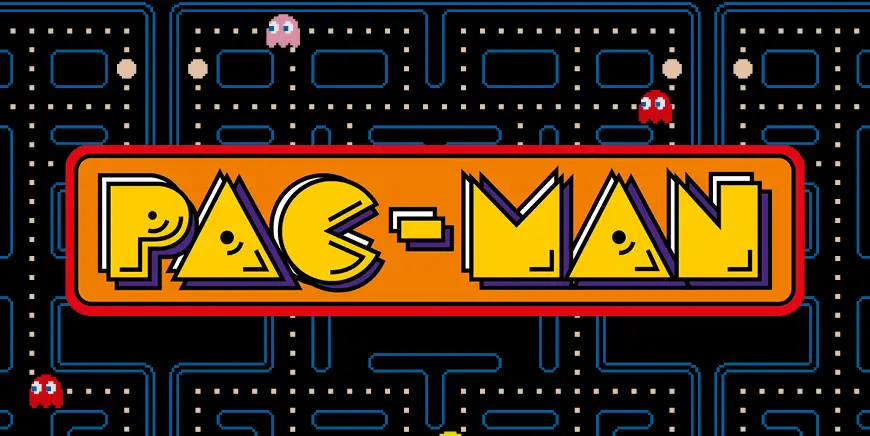
Space Invaders
Space Invaders, a groundbreaking title in the history of arcade gaming, transformed the landscape of interactive entertainment when it hit the scene in 1978. You might find it fascinating that this iconic game introduced a new level of engagement, where players could actively defend Earth from waves of descending aliens.
Its simple yet compelling mechanics made it easy to grasp yet challenging to master, inviting you to return again and again.
As you maneuver your laser cannon across the screen, you’ll notice how the game’s design encourages strategic thinking. Each alien’s movement patterns create a rhythm that becomes almost hypnotic. You’re not just a passive observer; you’re thrust into an exhilarating battle that demands precision and quick reflexes.
Moreover, Space Invaders was one of the first games to implement a scoring system that rewarded player skill, igniting a competitive spirit among gamers.
Its influence can still be felt today, serving as a foundation for countless shooter games that followed. So, whether you’re a seasoned player or a newcomer, diving into Space Invaders offers not just nostalgia but also a glimpse into the evolution of gaming freedom and creativity.
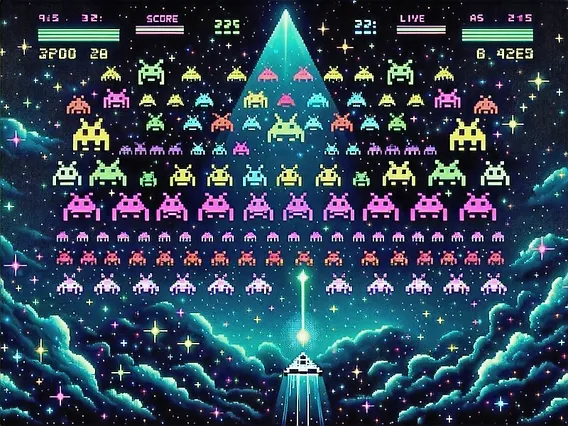
Donkey Kong
When you think of classic arcade games, Donkey Kong inevitably springs to mind as one of the pioneers that shaped the landscape of gaming. Released in 1981 by Nintendo, this game introduced the world to Mario, a character who’d go on to become a gaming icon.
In Donkey Kong, you navigate through a series of platforms while dodging barrels thrown by the titular ape, all in an effort to rescue your girlfriend, Pauline.
This game revolutionized gameplay mechanics by introducing a narrative element—something rare for the time. You weren’t just racking up points; you were part of a story. The combination of challenging gameplay, quirky characters, and engaging levels made Donkey Kong an instant classic. You could feel the thrill of each jump and the tension of each barrel, pushing you to improve your skills.
Donkey Kong’s legacy extends beyond its arcade roots, influencing countless sequels and adaptations across various platforms. It laid the groundwork for future platformers and solidified Nintendo’s place in gaming history.

Galaga
Following in the footsteps of Donkey Kong, Galaga emerged as another iconic title in the arcade landscape, enchanting players with its fast-paced action and strategic gameplay. Released in 1981, this space shooter quickly became a staple in arcades, inviting you to take control of a lone starfighter battling waves of alien invaders.
What sets Galaga apart is its combination of reflex-based shooting and tactical decision-making. You’ll need to dodge enemy fire while strategically targeting specific foes, especially when they attempt to capture your ship. The challenge intensifies as the game progresses, with increasingly complex patterns to memorize and counter.
The ability to rescue your captured ship and create a dual-fighter formation not only amplifies your firepower but adds an element of risk-reward strategy. This unique mechanic keeps you engaged, pushing you to improve your skills with each playthrough.
Galaga’s vibrant graphics and enchanting sound design further enhance the experience, making every session an exhilarating journey through space. Its lasting popularity is a reflection of its innovative gameplay, ensuring it remains a beloved classic among both new and seasoned gamers.
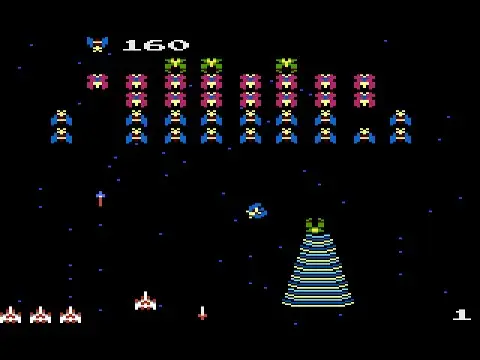
Street Fighter II
When you think of Street Fighter II, iconic characters like Ryu and Chun-Li likely come to mind, each with unique moves that have become legendary in gaming.
The competitive multiplayer experience it offers keeps players coming back, whether you’re battling friends or strangers.
Plus, its lasting cultural impact has shaped not just the fighting game genre, but the entire gaming landscape.
Iconic Characters and Moves
Since its release in 1991, Street Fighter II has become a cornerstone of the fighting game genre, introducing players to a roster of iconic characters and memorable moves that have left a lasting impact on gaming culture.
You probably remember the thrill of selecting your favorite fighter, whether it’s the powerful Ryu with his Hadouken or the agile Chun-Li flaunting her Lightning Kicks. Each character not only brings unique fighting styles but also embodies distinct cultural backgrounds, enriching the game’s narrative depth.
The moves themselves are legendary. The Shoryuken, a rising uppercut, and the spinning Bird Kick are just a couple of examples that have become staples in fighting games. Mastering these moves requires practice, yet the satisfaction of executing a perfectly timed combo is unparalleled.
Street Fighter II also encourages creativity in gameplay. You can develop your own strategies, combining characters’ moves to outsmart your opponent.
This sense of freedom in how you engage with the game is essential, as it allows for personal expression within the competitive framework. In a world where gaming is often about immersion, Street Fighter II delivers an exhilarating experience rooted in iconic characters and their signature moves.
Competitive Multiplayer Experience
The competitive multiplayer experience in Street Fighter II is where the game truly shines, transforming casual play into an exhilarating test of skill and strategy. When you step up to the arcade machine, you’re not just fighting a computer; you’re facing off against a real opponent, each of you vying for victory.
The thrill of competition brings an electrifying atmosphere, where every move counts, and every decision can lead to triumph or defeat. In matches, you’ll find yourself learning the nuances of character matchups, mastering combos, and anticipating your opponent’s tactics.
This dynamic environment fosters a sense of camaraderie among players, as you exchange tips and celebrate each other’s victories. The adrenaline rush of pulling off a well-timed special move, or turning the tide of battle with a perfectly executed counter, is unmatched.
Street Fighter II also introduced a variety of characters, each with unique abilities, encouraging players to explore different playstyles. Whether you prefer the aggressive approach of Ryu or the tactical finesse of Chun-Li, the game allows you to express your personality through combat.
Ultimately, it’s this competitive spirit that has kept players returning to the arcade for decades.
Lasting Cultural Impact
Street Fighter II’s influence extends far beyond the arcade, shaping not only the gaming industry but also popular culture as a whole. When you think about the late ’80s and early ’90s, it’s hard to overlook how this game popularized the fighting game genre. Its vibrant characters, each with unique backstories and fighting styles, gave players a sense of connection that few games offered at the time.
You’ve probably noticed how Street Fighter II sparked a wave of competitive gaming that paved the way for esports as it’s recognized today. Tournaments became a staple, bringing communities together and creating a vibrant culture around face-offs and player rivalries.
The game’s catchphrases and character designs have infiltrated various forms of media, from movies to merchandise, showcasing its deep-rooted presence in pop culture.
Moreover, Street Fighter II broke ground with its innovative mechanics, inspiring countless developers to create their own fighting games. Even today, you can see its legacy in the mechanics of modern titles and the continued popularity of fighting games.
You can’t deny that Street Fighter II set the stage for a genre and a culture that celebrates competition, skill, and community.
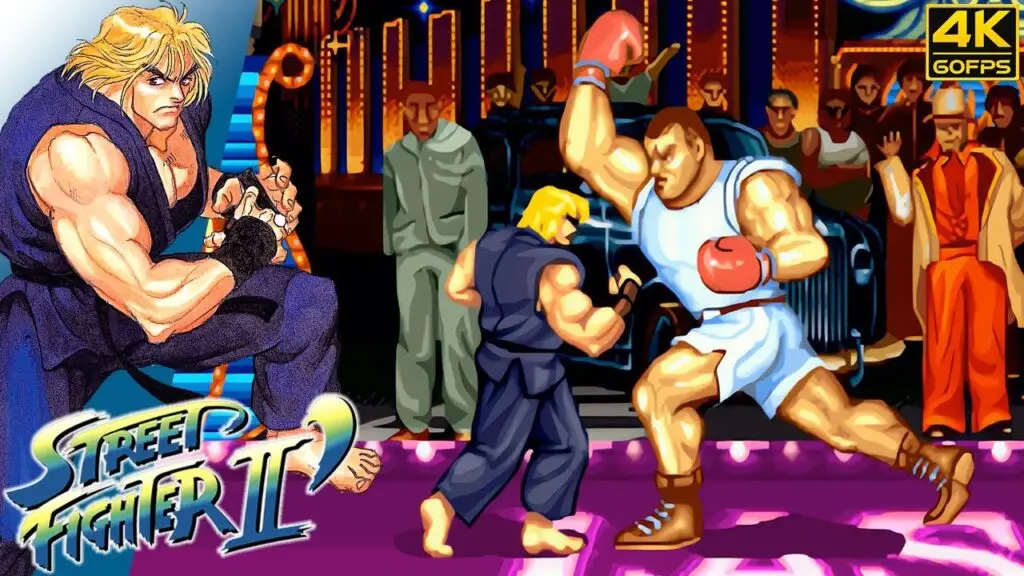
Asteroids
When you step into the world of Asteroids, you’re not just playing a game; you’re engaging with innovative gameplay mechanics that defined a genre.
The way you navigate and shoot at drifting rocks showcases a blend of strategy and reflexes that keeps you on your toes.
Plus, its cultural impact and enduring legacy have made Asteroids a cornerstone of arcade history that continues to influence modern gaming.
Gameplay Mechanics Explained
Maneuvering the vastness of space in Asteroids brings a thrilling sense of challenge and strategy that captivates players from the moment they start. Your ship floats in a seemingly endless void, and you’ll quickly realize that mastering the game’s mechanics is vital for survival.
Key gameplay mechanics make Asteroids both engaging and challenging:
- Thrust and Rotate: You control your ship’s movement with thrust and rotation, allowing you to navigate around asteroids and enemies. Precision is key, as a well-timed thrust can save you from disaster.
- Shooting: Your ship fires projectiles to destroy asteroids and enemy ships. Aim carefully—each shot counts, and you’ll need to strategize which targets to engage first.
- Screen Wrap: When your ship moves off one side of the screen, it reappears on the opposite side. This mechanic adds another layer of strategy, letting you escape tight situations or ambush opponents.
Understanding these mechanics is vital for dominating the game. You’ll find yourself weaving through obstacles and blasting foes while embracing the freedom of space.
Get ready to test your skills and strategy in this classic arcade experience!
Cultural Impact Overview
Asteroids greatly shaped the landscape of arcade gaming and left an indelible mark on popular culture. When you think about the iconic visuals and simple yet addictive gameplay, it’s clear why this game resonates. Its vector graphics and minimalist design allowed players to immerse themselves in a universe filled with danger and excitement. You weren’t just playing; you were steering through a space environment that felt limitless.
The cultural impact of Asteroids extends beyond just gaming. It sparked a fascination with space and science fiction in the late 1970s and early 1980s, inspiring countless films, books, and other games. The sense of freedom you experienced as you blasted asteroids and fought off enemy ships mirrored the era’s desire for exploration and adventure.
Furthermore, it introduced the idea of high scores and competition, fostering a community of gamers keen to push their skills. Asteroids also influenced game design by proving that simple mechanics could lead to profound engagement. It taught developers that gameplay could be both straightforward and deeply rewarding, a lesson that still shapes the industry today.
Legacy of Asteroids
The legacy of Asteroids is a tribute to its lasting influence in the world of arcade gaming. Released in 1979, this iconic game introduced players to a vast void filled with asteroids and enemy saucers, challenging your reflexes and strategic thinking.
Its simplicity and addictive gameplay left an indelible mark on the gaming industry and inspired countless titles.
Key elements of Asteroids’ legacy include:
- Innovative Gameplay: You navigated a spaceship in a 2D environment, using thrust and rotation mechanics that felt revolutionary at the time.
- Cultural Impact: Asteroids became a symbol of the arcade era, influencing game design and spawning a variety of clones and sequels.
- Enduring Popularity: Even today, Asteroids remains a staple in retro gaming collections and is frequently featured in modern game compilations.
Asteroids taught players the thrill of high scores and the excitement of arcade competition.
Its legacy encourages you to appreciate not just the gameplay, but the evolution of arcade games as a whole.
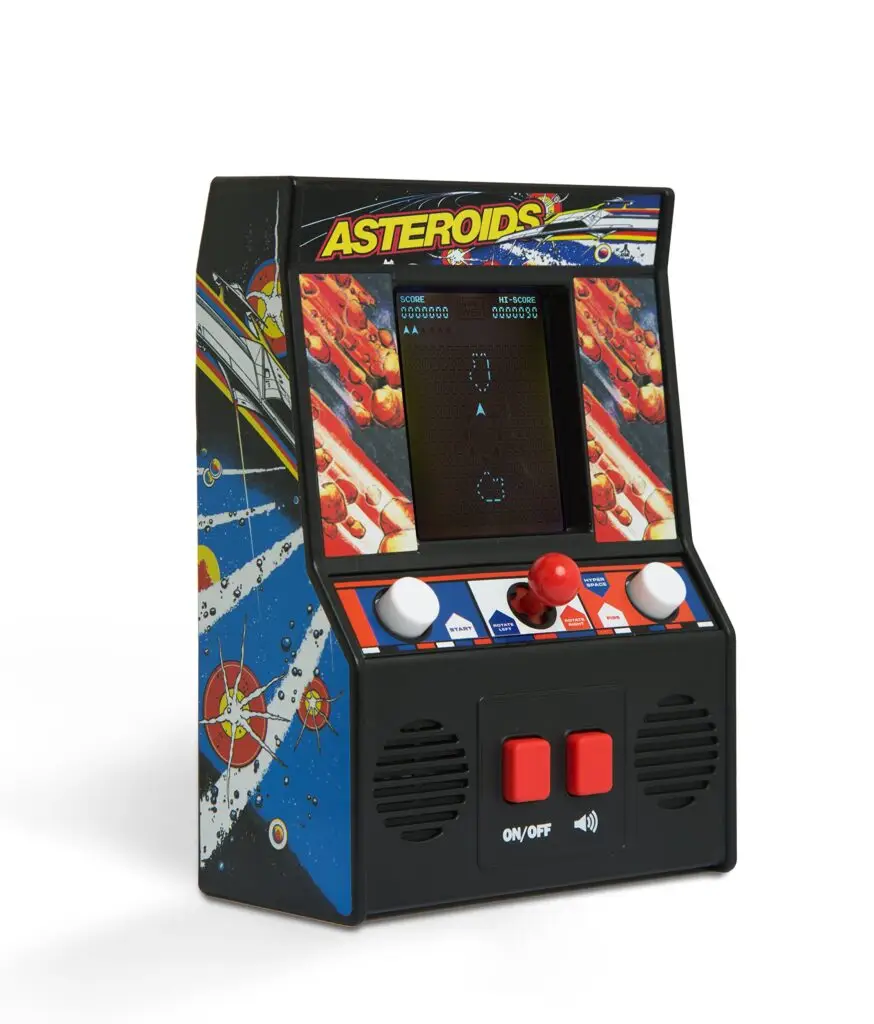
Dance Dance Revolution
Stepping onto the dance pad of Dance Dance Revolution (DDR) instantly transforms the arcade experience into a lively workout session.
You’ll find yourself immersed in a vibrant atmosphere, where catchy tunes and flashing lights create an electrifying environment. DDR isn’t just about dancing; it’s a competitive game that challenges your rhythm and coordination.
As you follow the on-screen arrows, you engage both your mind and body. You’ll discover that each song varies in difficulty, allowing you to progress at your own pace. This adaptability makes it appealing to players of all skill levels.
Plus, the social aspect of DDR can’t be overlooked; you can challenge friends or join groups, fostering a sense of community.
Moreover, DDR promotes fitness in a fun way. You’re often so caught up in the gameplay that you forget you’re getting a workout. Regular play can improve cardiovascular health and enhance coordination.
Ultimately, Dance Dance Revolution revolutionizes how you view gaming. It blurs the lines between entertainment and exercise, allowing you the freedom to enjoy both while dancing your way to victory.
Mortal Kombat
From its brutal battles to its unforgettable characters, Mortal Kombat has carved out a legendary place in the world of arcade gaming. This iconic fighting game, first released in 1992, introduced players to a domain of intense competition and unique gameplay mechanics that reshaped the genre.
You probably remember the thrill of executing a perfect combo or landing a devastating finishing move.
Here are a few reasons why Mortal Kombat remains a fan favorite:
- Iconic Characters: With fighters like Scorpion, Sub-Zero, and Liu Kang, each character brings their own unique backstory and abilities to the table.
- Signature Moves: The infamous fatalities not only set this game apart but also created a culture of competition among players trying to master them.
- Immersive Storylines: The evolving narrative across various game installments keeps players invested in the characters and their fates.
Mortal Kombat isn’t just a game; it’s a cultural phenomenon that encourages players to embrace their competitive spirit.
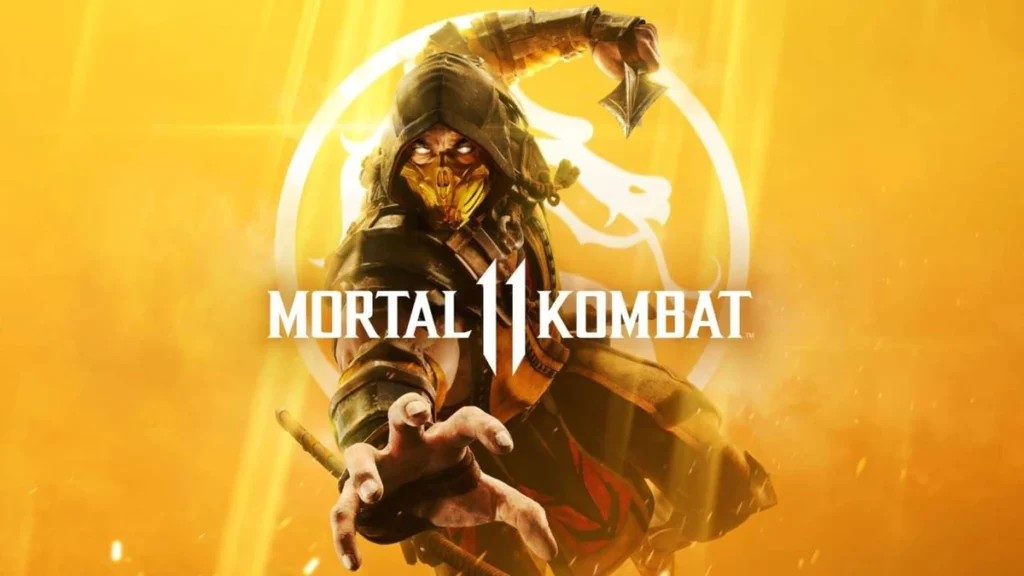
Ms. Pac-Man
Ms. Pac-Man isn’t just a sequel; she’s a game-changer in the arcade world. Released in 1982, this vibrant title took the classic Pac-Man formula and added new elements that captivated players. You’re not just chasing pellets; you’re maneuvering through mazes with unpredictable ghost movements and bonus fruits that keep you on your toes.
The introduction of multiple maze designs and the ability to change directions mid-chase makes each playthrough feel fresh and exciting.
What sets Ms. Pac-Man apart is her character. Unlike the original, she’s not just a yellow sphere; she’s a dynamic personality. Players connect with her, creating a sense of agency and empowerment as you guide her through challenges.
This game also broke gender stereotypes by presenting a female protagonist in a leading role during a time when that was rare.
The gameplay encourages strategic thinking and quick reflexes, inviting you to improve your skills. As you master the mazes, you find a deep sense of satisfaction.
Ms. Pac-Man’s legacy endures, reminding us that arcade gaming isn’t just about nostalgia; it’s about freedom, challenge, and connection.
Punch-Out
After traversing the mazes of Ms. Pac-Man, you might find yourself ready for a different kind of challenge: Punch-Out!! This iconic boxing arcade game immerses you in the ring, demanding quick reflexes and strategic thinking. Here, you step into the shoes of Little Mac, a determined underdog aiming to rise through the ranks and become champion.
The game’s appeal lies in its unique mechanics and memorable opponents. You’ll face a colorful cast of characters, each with distinct fighting styles and patterns. To survive and succeed, keep these strategies in mind:
- Study Opponent Moves: Each fighter has a tell. Recognizing these can help you dodge or counter effectively.
- Timing is Key: The game rewards precision, so learn when to punch and when to defend.
- Practice Makes Perfect: Don’t hesitate to replay bouts; repetition helps sharpen your skills.
Punch-Out!! captures the essence of competition while embodying the spirit of perseverance. With its engaging gameplay and rich character design, it creates a nostalgic experience that invites you back for more punches and victories.
Step into the ring and feel the thrill of the fight!
Guitar Hero
Guitar Hero revolutionized arcade gameplay with its unique controller that mimicked a real guitar, allowing you to strum and fret along to your favorite rock anthems.
This innovative mechanic not only made the game accessible to players of all skill levels but also fostered a communal atmosphere as friends gathered to jam together.
Its cultural impact is undeniable, as it reignited interest in music games and inspired a generation of players to pick up real instruments.
Gameplay Mechanics Explained
The thrill of strumming along to your favorite rock anthems is what makes Guitar Hero such an exhilarating experience. The game’s mechanics are designed to make you feel like a rockstar, encouraging you to hit the right notes in time with the music. You’ll use a plastic guitar controller with colored buttons corresponding to the notes in the song.
Here’s how it works:
- Notes and Timing: As notes cascade down the screen, you need to press the correct button while strumming the controller, syncing your actions with the rhythm.
- Star Power: By hitting specific note sequences perfectly, you can activate “Star Power,” boosting your score and adding a rush of excitement.
- Difficulty Levels: You can choose from various difficulty levels, allowing you to gradually improve your skills, from beginner to expert.
This combination of rhythm, timing, and strategy creates an addictive gameplay loop. Each song feels unique, pushing you to master the chords while enjoying the music.
It’s this blend of mechanics that keeps players coming back for more, enthusiastic to challenge themselves and rock out to their favorite tracks.
Cultural Impact Overview
While many games have left their mark on pop culture, few have had as profound an impact as Guitar Hero. This revolutionary title transformed how you and your friends engage with music and gaming. By putting a plastic guitar in your hands, it allowed you to feel like a rockstar, transcending traditional gameplay and inviting a unique social experience.
Guitar Hero didn’t just entertain; it reignited interest in rock music, introducing a new generation to classic tracks and artists. It sparked a resurgence of guitar-driven music, influencing both listeners and musicians. You might’ve found yourself jamming out with friends, fostering a sense of community that few games can replicate.
Moreover, the game’s success prompted a wave of music rhythm games, each vying for a piece of the action. Yet, none captured the same cultural zeitgeist.
Guitar Hero’s legacy lives on in music festivals, karaoke bars, and even your own living room, where it often serves as a party staple. Its ability to break barriers between gamers and musicians illustrates the power of interactive entertainment, making it a timeless classic that resonates with freedom and creativity.
NBA Jam
Here are a few reasons why NBA Jam captured the hearts of gamers:
- Unique Gameplay Mechanics: The game introduced exaggerated physics and spectacular slam dunks, pushing the boundaries of what a sports game could be.
- Memorable Characters: You could choose from real NBA stars, making every match feel personal and exciting.
- Co-op Play: The two-player mode encouraged competition among friends, fostering a social gaming experience that many cherish.
NBA Jam not only set the stage for future sports games but also left a lasting legacy in arcade culture.
Its blend of fun, skill, and competitiveness offers a thrilling experience, reminding you why you fell in love with gaming in the first place.
Tetris
Frequently hailed as one of the greatest video games of all time, Tetris has captivated players since its debut in 1984. This puzzle game, designed by Alexey Pajitnov, challenges you to manipulate falling tetrominoes to create complete lines. The simplicity of the concept is deceptive; mastering Tetris requires quick thinking, strategic planning, and spatial awareness.
As you play, you’ll find yourself immersed in a rhythm, responding instinctively to the shapes that descend. The game’s escalating speed keeps you on your toes, pushing your limits with every line you clear. Tetris doesn’t just entertain; it sharpens your cognitive abilities, enhancing problem-solving and multitasking skills.
The game’s universal appeal lies in its accessibility. You don’t need prior gaming experience to enjoy Tetris; anyone can pick it up and play. Its iconic status has spawned countless adaptations across platforms, from handheld devices to mobile apps.
Tetris has also influenced game design, inspiring countless titles with its core mechanics. Whether you’re a seasoned player or a curious novice, Tetris invites you to lose yourself in its endless challenge, proving that sometimes, the simplest games are the most enduring.
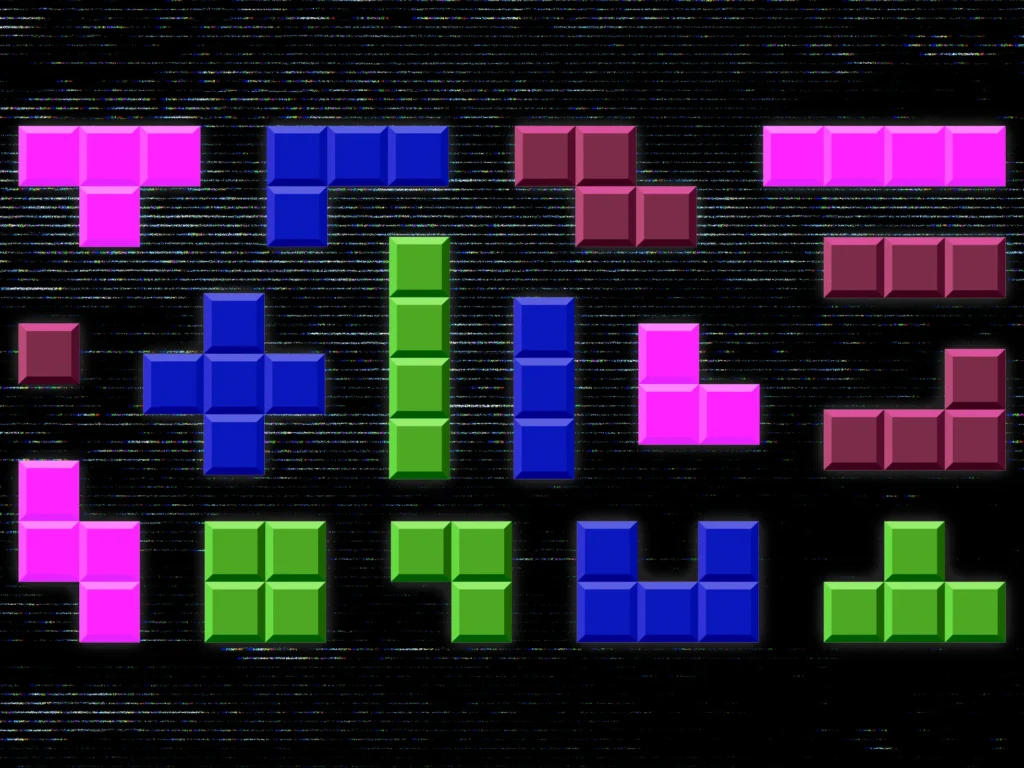
Tempest
Tempest revolutionized the arcade scene with its unique gameplay mechanics that combined fast-paced action and a distinctive vector graphics style.
As you navigate the game’s psychedelic tunnels, you can’t help but appreciate its cultural impact, influencing countless titles that followed.
This legacy continues to resonate with gamers today, proving that Tempest is more than just a nostalgic classic.
Gameplay Mechanics Overview
In the world of arcade games, Tempest stands out with its unique gameplay mechanics that keep players on their toes. As you immerse yourself in this fast-paced shooter, you’ll quickly notice how its vector graphics and tubular playfield create an exhilarating experience. You control a claw-shaped ship, maneuvering along the edges of a 3D geometric tunnel, and your goal is to eliminate enemies and survive wave after wave of increasingly challenging foes.
Key gameplay mechanics include:
- Rotational Movement: You rotate your ship around the tunnel’s perimeter, enabling fluid movement and strategic positioning against incoming enemies.
- Rapid Fire: You can shoot continuously, allowing for intense action and quick reflexes as you fend off foes.
- Power-Ups: Collecting power-ups boosts your abilities, giving you temporary advantages and enhancing the fun.
The combination of these mechanics not only makes Tempest highly engaging but also demands skill and timing, pushing you to improve with each playthrough.
This arcade classic continues to captivate players, offering a sense of freedom and excitement that’s hard to replicate.
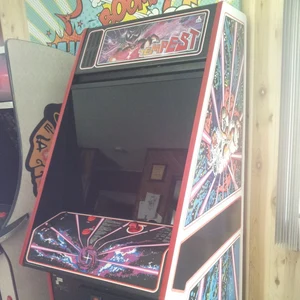
Cultural Impact and Legacy
The unique gameplay mechanics of Tempest have left a lasting mark on the arcade gaming landscape, influencing both game design and player engagement. Its innovative use of vector graphics and distinct control system created an experience that felt fresh and exhilarating.
You’ll find that the game’s focus on rapid reflexes and strategic movement compelled players to engage in ways previously unseen. This approach not only captivated gamers but also inspired subsequent titles, showcasing the potential of dynamic, fast-paced gameplay.
Tempest’s impact extends beyond its mechanics; it helped shape the culture of arcades in the 1980s. As you played alongside others, the shared excitement fostered a sense of community, turning arcade spaces into social hubs.
The game’s design encouraged competition, with players aiming for high scores and recognition, which became a staple of arcade culture.
Moreover, Tempest’s legacy lives on through modern games that draw from its core principles. Titles like Geometry Wars and Resogun echo its frantic energy and visual style.
Conclusion
In the vibrant tapestry of gaming history, these arcade classics intersect like the paths of Pac-Man traversing a maze. Each title, from the strategic shooting of Space Invaders to the competitive spirit of Street Fighter II, creates a unique thread that weaves community and nostalgia. Together, they form a legacy that’s not just about pixels and sounds, but about shared experiences and lasting connections. As you immerse yourself in these games, you’re not just playing; you’re part of a timeless phenomenon.